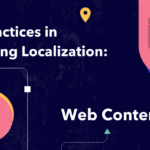
As international business becomes more prevalent, businesses are acquiring customers from across the world. And with a global audience comes global responsibility. Now, business executives are tasked with taking their existing support strategy and replicating it on a global level.
The task of taking customer support and experience and being able to scale globally can be daunting. As such, Judy Li, Solutions Specialist at Unbabel and David Rostan, Head of Revenue at Stonly got together to share best practices and actionable items that business executives can do to solve key challenges of growing your team and your customer base internationally.
To further dive into Judy and David’s key takeaways on managing the customer experience at scale, we’ve recapped the webinar, “Managing Global Customer Experiences at Scale” below. Let’s explore.
Meeting Your Customers Where They Are (And In Their Language)
There is no one size fits all approach to translation — especially when it comes to the customer experience – and meeting your customers where they are is key to proper globalization. In order to dive deeper into global communication, Unbabel commissioned a study in 2021 – The Unbabel Global Multilingual CX Report 2021 – to take a closer look at native language effect, what actually stands to build trust between brands and consumers, and what’s actually blocking growth.
“I think the key takeaway here is that we can’t really adopt a one size fits all approach,” shared Judy. “Every market should be treated individually and cultural norms should be taken into consideration.”
Companies need to explore ways to expand customer support in various languages, not just during the support stage, but throughout the entire customer journey.
“69% of customers believe that it’s extremely important to offer an end-to-end experience in their native language,” Judy continued. “Imagine if you were targeted with a bunch of ads in your native language. You go to the brand website, everything was localized, you’re happy, you understand the offering and you’d like to purchase. And so all of a sudden you’ve made the purchase. Then you’ve hit a road bump and you need customer service support. And in this case, you reach out and all of a sudden you realize that the customer service support doesn’t actually speak your language and you don’t actually speak theirs. ”
Beyond being important for the customer, this can be a very costly mistake for a business if not addressed properly. In fact, Judy continues on to say, “It can cost your company on average 5 to 7 times more to acquire a new customer than to actually retain an existing one,” aligning with survey respondents reporting that they’d not purchase again after a negative experience. Getting an experience right the first time is key.
Self-Serve is a Top Priority
Self-serve is, “One of the first areas customers turn to when they’re looking for answers, and often a product’s knowledge base or FAQs,” Judy says. So, how can businesses ensure self-serve sections of the customer experience are tailored to customers, no matter what language they speak?
“One of the things that is clear, in addition to the impact in clear preference for communication and a customer’s native language, is kind of what you [Judy] said about the difference in expectations between countries and how that impacts their relationship with you on the service side,” David states. “And I think it’s those differences that make self-serve support so, so important.”
One example David discusses is with Stonly’s customer, YouSign, which offers a very adaptable platform, catering to customers no matter their language. “Self serve we’ve seen is definitely a key component to scaling. And I think that one of the ways that you can do that is make sure it adapts to as many situations and people as possible,” David shares.
But great customer service goes beyond self-serve. This is where the agents come into play.
Making Your Agents Multilingual
As businesses continue to increase global presence, the importance of staffing and setting your service agents up for success will come down to hiring native speakers, which can be costly, or providing the right technology.
When making hiring decisions, it’s important to hire agents for their passion, knowledge, and/or skills, rather than their ability to speak a particular language.
Finding the right balance can prove difficult.
“For the product service, attrition rates are typically quite high,” Judy says. “So it means that you’re frequently having to advertise, recruit, train, which, in addition to being costly, is a very time consuming exercise. So what that actually means for the customer is that because you’ve got all the staffing issues in the back end, it can result in longer wait times for your customers if a native agent isn’t available. And that tends to have a wider domino effect.Your KPIs such as first response times, agent handling times, etcetera will be affected.”
As a solution, Judy shares that, “Making your existing agents multilingual eliminates this problem and it allows and empowers your agents to do more. And that’s where Unbabel comes in with its integration with Salesforce.”
With this capability, Unbabel acts as a force multiplier for your Salesforce team, turning individual agents into an instant army of translators able to address customers anywhere in the world. This feature also uses Quality Estimation to determine translation quality so business executives can feel confident in the quality of their content as well.
Setting Support Agents Up for Success
While translation is no doubt a hurdle in the customer experience, agents are also expected to be able to quickly share the right information to ultimately contribute to a happy customer. There are thousands of tools and ways to empower your agents, but it’s important to always keep in mind agent bandwidth, and ensure they’re not feeling overwhelmed.
This is where data and proper workflows become critical in helping managers determine workloads for each agent.
David goes on to explain that “the first workflow that we see people implement really successfully is to route the right customers and locations to the people who have the right knowledge or language skills.” This will ultimately expedite the customer service process, freeing up agent’s time to address more complicated tasks and creating a more satisfied customer.
Interested in learning more about scaling customer experience globally? Watch the full webinar here.












